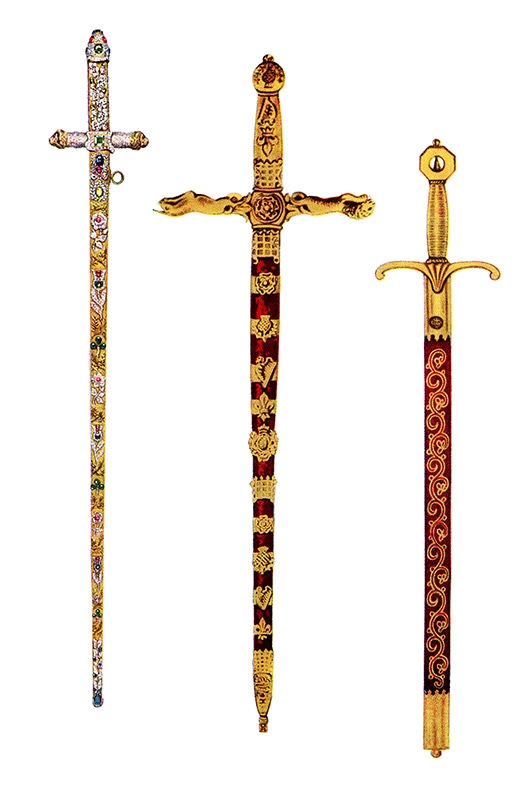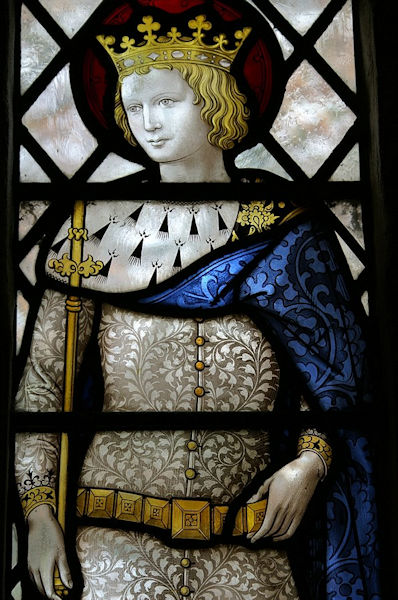Curtana – Sword Of Mercy Once Belonged To The Anglo-Saxon King Edward The Confessor And Perhaps Even The Arthurian Hero Tristan
Ellen Lloyd – AncientPages.com - Curtana, the Sword of Mercy, is an 11th-century sword that is a truly historical object and one Crown Jewels of the United Kingdom. It is one of only five swords used during the coronation of British kings and queens.
The other four British coronation swords are the Jeweled Sword of State, the Sword of State, the Sword of Temporal Justice, and the Sword of Spiritual Justice. The British Crown Jewel's swords are some of the most valuable swords in the world.
From left to right: The jeweled Sword of Offering, the Sword of State, and the Sword of Mercy (Curtana).
G. Younghusband; C. Davenport (1919). The Crown Jewels of England. London: Cassell & Co. p. 54. (published in the US by Funk & Wagnalls, NY). Cyril Davenport (1848 – 1941)
This famous weapon once belonged to Edward the Confessor (1003-1066), one of the last Anglo-Saxon kings of England before the Norman Conquest of 1066. He was known as 'the Confessor' because of his deep piety.
Edward the Confessor ruled from 1042 to 1066, and his reign was characterized by the crumbling disorganization of royal power in England. Shortly after Edward the Confessor's death, the Normans began to expand into England, led by William the Conqueror, a ruthless and powerful ruler who changed Britain forever.
Church of England parish church of St Nicholas, Ickford, Buckinghamshire: stained glass window depicting Saint Edward the Confessor. Ickford, Buckinghamshire. Credit: Vitrearum - CC BY-SA 2.0
The name Curtana comes from the Latin Curtus, meaning short. Interestingly the sword is also linked to some ancient legends.
According to one legend, the Curtana was the sword of Ogier the Dane, an 8th-century warrior. The sword bore the inscription, "My name is Cortana, of the same steel and temper as Joyeuse and Durendal." It is said that Ogier drew the Sword of Mercy against Emperor Charlemagne's son in revenge for the murder of his son but stopped with a voice from Heaven called upon him to show mercy.
Tristan and Iseult as depicted by Herbert James Draper (1864–1920). Public Domain
Another legend links the Sword to Mercy to Tristan, the hero of the Arthurian Tristan and Iseult story. He was a Cornish knight of the Round Table.
The 13th-century Prose Tristan states that Ogier had inherited Tristan's sword, shortening it and naming it Cortaine.
These ancient legends may be true but have not been confirmed. What is undoubtedly very possible is that the Sword of Mercy once belonged to Edward the Confessor.
It has a steel blade inlaid with copper and a wire-bound grip. The scabbard is covered with velvet and embroidered with gold thread. The blade started as a normal pointed sword that had been cut off about from its original point. Why the sword is broken is an ancient mystery. Perhaps Edward, the Confessor, broke the blade himself or had it forged that way precisely for the current symbolic resonance. It's also been said that an angel broke off the blade to show that a sovereign must show mercy.
Today, the Sword of Mercy is displayed with the other Crown Jewels in the Jewel House at the Tower of London.
Updated on March 9, 2024
Written by - Ellen Lloyd – AncientPages.com
Copyright © AncientPages.com All rights reserved. This material may not be published, broadcast, rewritten or redistributed in whole or part without the express written permission of AncientPages.com
More From Ancient Pages
-
 Underwater City: Unveiling The Secrets At The Bottom Of Fuxian Lake
Ancient Mysteries | Jun 13, 2015
Underwater City: Unveiling The Secrets At The Bottom Of Fuxian Lake
Ancient Mysteries | Jun 13, 2015 -
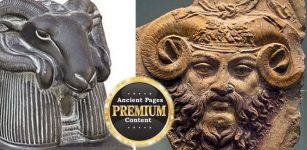 The Enigma Of People And Gods With Horns In Ancient Times
Ancient Mysteries | Nov 7, 2015
The Enigma Of People And Gods With Horns In Ancient Times
Ancient Mysteries | Nov 7, 2015 -
 The Mixtec – Mysterious Very Advanced Culture Of The Foremost Goldsmiths Of Mesoamerica
Civilizations | Dec 2, 2017
The Mixtec – Mysterious Very Advanced Culture Of The Foremost Goldsmiths Of Mesoamerica
Civilizations | Dec 2, 2017 -
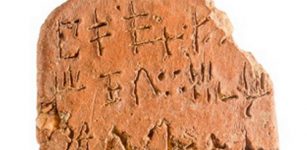 New Clues To Minoan Writing System
Archaeology | Sep 10, 2020
New Clues To Minoan Writing System
Archaeology | Sep 10, 2020 -
 Does A Baffling Artifact Offer Evidence Of Ancient Extraterrestrial Visitation In New Zealand? – The Discovery – Part 1
Ancient Mysteries | Jul 20, 2020
Does A Baffling Artifact Offer Evidence Of Ancient Extraterrestrial Visitation In New Zealand? – The Discovery – Part 1
Ancient Mysteries | Jul 20, 2020 -
 Wreckage of The French Steamship That Sank In Atlantic In 1856 Found Off The Coast Of Massachusetts
Underwater Discoveries | Sep 23, 2024
Wreckage of The French Steamship That Sank In Atlantic In 1856 Found Off The Coast Of Massachusetts
Underwater Discoveries | Sep 23, 2024 -
 First Genomic Evidence Of Early Migration From New Guinea Into The Wallacea Archipelago – New Study
Archaeology | Jan 14, 2025
First Genomic Evidence Of Early Migration From New Guinea Into The Wallacea Archipelago – New Study
Archaeology | Jan 14, 2025 -
 On This Day In History: William Laud Archbishop Of Canterbury Beheaded – On Jan 10, 1645
News | Jan 10, 2017
On This Day In History: William Laud Archbishop Of Canterbury Beheaded – On Jan 10, 1645
News | Jan 10, 2017 -
 Recreation Of Cleopatra’s Ancient Perfume
Archaeology | Aug 26, 2019
Recreation Of Cleopatra’s Ancient Perfume
Archaeology | Aug 26, 2019 -
 ‘Green’ Saudi Arabia Was Home To A 350,000-Year-Old Human Settlement
Archaeology | May 18, 2021
‘Green’ Saudi Arabia Was Home To A 350,000-Year-Old Human Settlement
Archaeology | May 18, 2021 -
 Ancient Roman Wine Was Spicy And Smelled Like Toast – Dolia Vessels Reveal
Archaeology | Jan 25, 2024
Ancient Roman Wine Was Spicy And Smelled Like Toast – Dolia Vessels Reveal
Archaeology | Jan 25, 2024 -
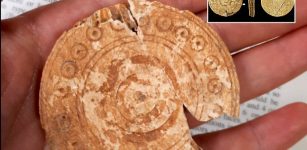 A Large ‘Tableman’ Sheds Some Light On People’s Fun And Games In Medieval Bedfordshire
Archaeology | Jun 19, 2023
A Large ‘Tableman’ Sheds Some Light On People’s Fun And Games In Medieval Bedfordshire
Archaeology | Jun 19, 2023 -
 Did Lead Pollution Cause IQ Declines Among Ancient Romans?
Places | Jan 8, 2025
Did Lead Pollution Cause IQ Declines Among Ancient Romans?
Places | Jan 8, 2025 -
 Dramatic Life Story Of Queen Marie Antoinette Executed By Guillotine During The French Revolution
Featured Stories | Oct 18, 2021
Dramatic Life Story Of Queen Marie Antoinette Executed By Guillotine During The French Revolution
Featured Stories | Oct 18, 2021 -
 Stunning Colorful Ancient Roman Mosaic With Found Under Aldi Supermarket Site In UK
Archaeology | Mar 20, 2023
Stunning Colorful Ancient Roman Mosaic With Found Under Aldi Supermarket Site In UK
Archaeology | Mar 20, 2023 -
 Lyman Lake Petroglyphs And Famous Kokopelli-Flute Player Left By Ancestors Of The Hopi Indians
Civilizations | Nov 26, 2018
Lyman Lake Petroglyphs And Famous Kokopelli-Flute Player Left By Ancestors Of The Hopi Indians
Civilizations | Nov 26, 2018 -
 Impact Of European Contact With Pacific Islands Was Devastating – New Study Reveals
Archaeology | Sep 30, 2022
Impact Of European Contact With Pacific Islands Was Devastating – New Study Reveals
Archaeology | Sep 30, 2022 -
 Oldest Canoe Ever Discovered In Maine – It Dates To 1280-1380 A.D
Archaeology | Jun 13, 2019
Oldest Canoe Ever Discovered In Maine – It Dates To 1280-1380 A.D
Archaeology | Jun 13, 2019 -
 Pyramid Of The Moon And Avenue Of The Dead Could Be Foundation For Urban Design Of Teotihuacan
Archaeology | Jul 31, 2020
Pyramid Of The Moon And Avenue Of The Dead Could Be Foundation For Urban Design Of Teotihuacan
Archaeology | Jul 31, 2020 -
 Prehistoric Hi-Tech Nanospirals Barely Visible To The Naked Eye: Still Remain An Unsolved Mystery
Ancient Technology | Mar 4, 2014
Prehistoric Hi-Tech Nanospirals Barely Visible To The Naked Eye: Still Remain An Unsolved Mystery
Ancient Technology | Mar 4, 2014

